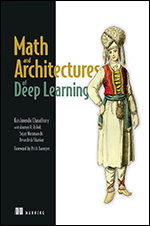Graph Data Structures: Understanding Graphs & Knowledge Graphs
Python
| Beginner
- 12 videos | 1h 42m 47s
- Includes Assessment
- Earns a Badge
Graphs are used to model a large number of real-world scenarios, including professional networks, flight networks, and schedules. Working in these problem domains involves a deep understanding of how graphs are represented and how graph algorithms work. Learn the basic components of a graph and how nodes and edges can be used to model relationships. Examine how domains such as social networks, purchases on an e-commerce platform, and connected devices can be modeled using graphs. Next, explore how to use an organizing principle to add semantic meaning and context to graphs. Discover how to apply higher-level organizing principles to knowledge graphs using taxonomies and ontologies. Finally, get hands-on experience creating and manipulating graphs, and running graph algorithms using the NetworkX library in Python. When you have completed this course, you will have a solid understanding of how graphs model entities and relationships in the real world.
WHAT YOU WILL LEARN
-
Discover the key concepts covered in this courseUse graph nodes and edges to model entities and relationships in the real worldRecall the attributes of the property graph model used to represent knowledge graphsCompare and contrast plain old graphs with knowledge graphsCreate taxonomies and ontologies by using higher-level organizing principles with knowledge graphsList the different types of graphs and explore their structure
-
Create, manipulate, and visualize graphs in networkxPerform common graph operations to compute adjacent nodes, degree of a node, and check edge connections on undirected graphsPerform common graph operations to find predecessors, successors, ancestors, and descendants on directed graphsExecute algorithms in networkx to compute triangle count, simple cycles in graphs, and test for a directed acyclic graphExecute algorithms in networkx to perform topological sort, compute the shortest path, and find the minimal spanning treeSummarize the key concepts covered in this course
IN THIS COURSE
-
2m 7s
-
12m 18sIn this video, you will use graph nodes and edges to model entities and relationships in the real world. FREE ACCESS
-
3. The Property Graph Model6m 15sUpon completion of this video, you will be able to recall the attributes of the property graph model used to represent knowledge graphs. FREE ACCESS
-
4. Plain Old Graphs and Knowledge Graphs10m 46sIn this video, learn how to compare and contrast regular graphs with knowledge graphs. FREE ACCESS
-
5. Taxonomies and Ontologies11m 4sIn this video, find out how to create taxonomies and ontologies by using higher-level organizing principles with knowledge graphs. FREE ACCESS
-
6. Types of Graphs9m 28sUpon completion of this video, you will be able to list the different types of graphs and explore their structure. FREE ACCESS
-
7. Creating and Visualizing an Undirected Graph7m 20sIn this video, you will learn how to create, manipulate, and visualize graphs in NetworkX. FREE ACCESS
-
8. Performing Operations on Undirected Graphs12m 43sIn this video, find out how to perform common graph operations, such as computing adjacent nodes, degree of a node, and checking edge connections on undirected graphs. FREE ACCESS
-
9. Performing Operations on Directed Graphs7m 47sLearn how to perform common graph operations to find predecessors, successors, ancestors, and descendants on directed graphs. FREE ACCESS
-
10. Executing Graph Algorithms I8m 13sDuring this video, you will learn how to execute algorithms in NetworkX to compute triangle count, simple cycles in graphs, and test for a directed acyclic graph. FREE ACCESS
-
11. Executing Graph Algorithms II12m 52sLearn how to execute algorithms in NetworkX to perform topological sort, compute the shortest path, and find the minimum spanning tree. FREE ACCESS
-
12. Course Summary1m 54s
EARN A DIGITAL BADGE WHEN YOU COMPLETE THIS COURSE
Skillsoft is providing you the opportunity to earn a digital badge upon successful completion on some of our courses, which can be shared on any social network or business platform.
Digital badges are yours to keep, forever.






